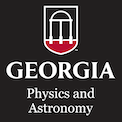Dr. Kevin T. Seale from Vanderbilt University is our Undergraduate Awards Day Colloquium Speaker.
Abstract: From its beginning as a descriptive, taxonomic recording of existing species to the recognition of the cell as a fundamental unit of biology to the discovery of the genetic code as the software driver for all living organisms, research in biology and medicine has evolved. Along a timeline similar to the progression of the study of physical sciences from the very large (the solar system and universe) to the very small (subatomic particles), biologists have reached the reductionist limit with the complete description of the structure and function of molecular DNA translation, transcription and replication machinery. Perhaps not surprisingly, biologists, physicists (and engineers, chemists, mathematicians) have met at the bottom of the reductionist path at many universities around the world, and are working together to build models and experiments of ever-greater complexity to study the emergent properties of molecular assemblies such as the biological cell in a growing field known as Systems Biology. Undergraduate students interested in Systems Biology must grapple with the requirement that they declare a major – which by definition will temporarily restrict much of their thinking to existing academic disciplines. The Searle Systems Biology and Bioengineering Undergraduate Research Experience (SyBBURE) at Vanderbilt University is an effort to invigorate the studies of undergraduates of all majors by providing long-term and unfettered access to the Vanderbilt Institute for Integrative Biosystems Research and Education (VIIBRE) and associated laboratories across campus. Students with active and imaginative minds are encouraged, guided and amply supplied to investigate the function of individual living cells under tightly controlled experimental conditions using state-of-the-art biomicroelectromechanical devices. The SyBBURE undergraduates, along with collaborating faculty are helping to develop and build extensive experimental approaches and apparatus for systems biology research that are more evenly matched to the enormous complexity of a single, living biological cell. I will give an overview of SyBBURE experiments and results and discuss bold new directions chosen by the VIIBRE/SyBBURE cohort to bring the power of modern technology to bear on difficult biological problems.


